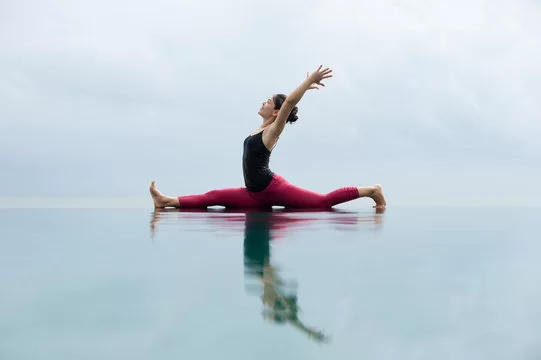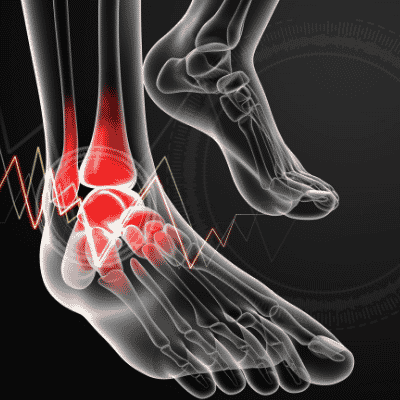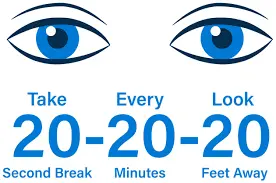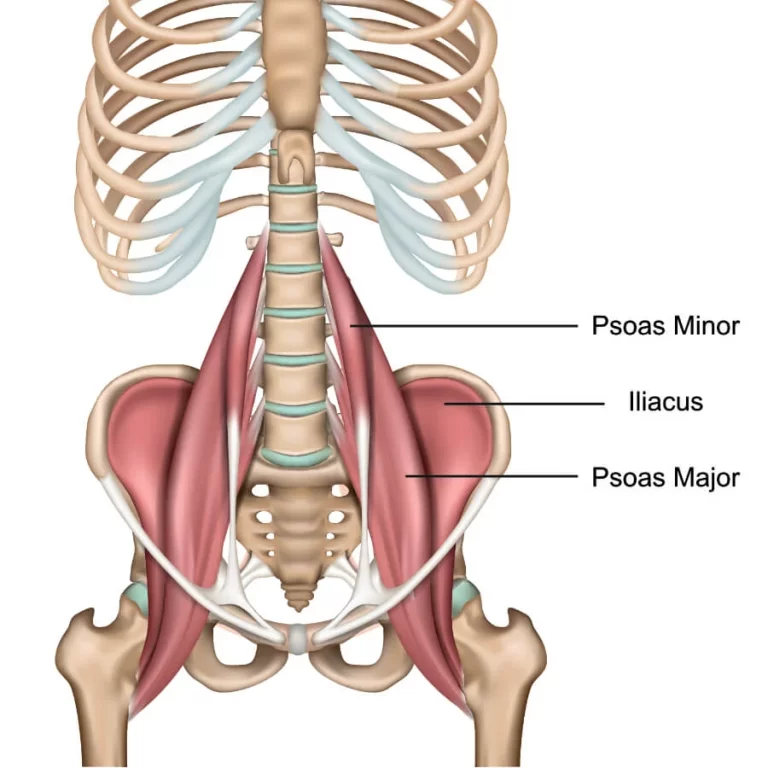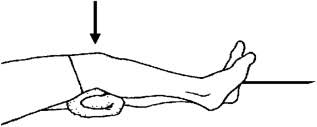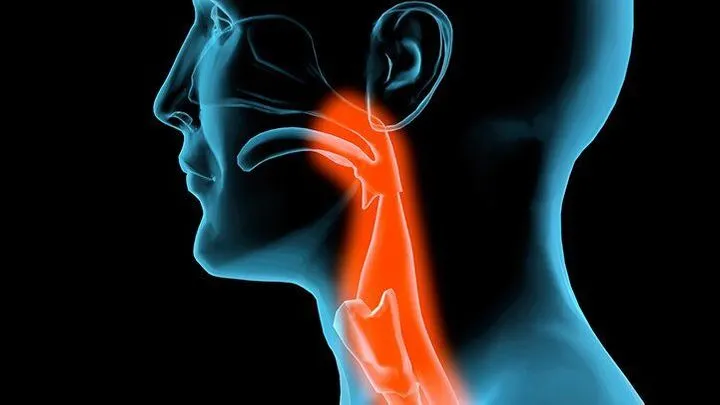Hanumanasana
What is Hanumanasana?
Hanumanasana, commonly referred to as the Monkey Pose or the Splits, is a difficult yoga pose requiring flexibility and strength in the legs, hips, and lower back. The stance is named after Hanuman, a Hindu deity who is admired for his determination, bravery, and devotion and who is frequently portrayed as a monkey.
Hanumanasana benefits stretch and maintain the muscle in the thighs, hamstrings, and part of the groin.
How to do Hanumanasana?
Start in Adho Mukha Svanasana notice that your upper arms frame your ears, your pelvis is square to the front of the mat, and your thighs are neutral all elements that will be central to the last posture.
Step your right foot forward among your hands so your toes are in line with your fingertips. Plunge your left knee to the mat, and point your toes.
Pin your right hip back and in, and move your left outer hip forward, squaring your hips toward the front of the mat.
To maintain this alignment, shift your hips back so they stack over your left knee, then adjust your right foot forward to straighten your leg, maintaining your hips over your left knee and facing straight forward.
Stay here with your fingertips on either side of your right knee; press into your right big toe ridge, and extend straight back with your left big toe.
Start to slide your right foot forward while persisting to staple your right hip back and in.
Your pelvis moves forward and down through distance as your left leg straightens.
As your legs open, release the flesh of your buttocks away from your back waist, and gently tone the pit of your abdomen to discover a lift in the front of your pelvis.
Maintain the neutrality of your legs by pressing into your right big toe ridge and turning your left internal thigh to the ceiling while rotating your left external hip forward.
Hold plunging your pelvis until the back of your right thigh and the front of your left thigh comes to the floor.
Continue to prioritize your pelvis staying square to the front of the mat and your legs staying neutral the back thigh tends to externally turn, so maintain demand on the lift of your internal thigh.
Plunge your tailbone, soften your front ribs, then bring your arms to the ceiling with your upper arms preparing your ears.
Hold for ten to twelve breaths, then retrace the entrance, returning to Adho Mukha Svanasan. Replicate on the other side.
Hanumanasana Pose Video
Benefits of Hanumanasana
Below, we have jotted down a few of the best physical, mental, and spiritual benefits of Hanumasana.
Enhances Flexibility
By stretching the full body, the pose also improves your overall flexibility. This, in turn, increases your athletic performance and reduces the chances of injuries.
Stretches Body
The pose is a front split and supports stretching plenty of muscle groups. You can prolong your hamstrings, groin, hip flexors, arms, core muscles, and back through this single posture.
Better Balance and Stability
Balance is a big part of this yoga. While you need body stability to accomplish this yoga, performing it further enhances your body’s stability and gets good alignment.
Strengthens Muscles
You can also create your legs stronger by executing this posture daily. It enhances the blood circulation in your lower body and this creates and strengthens the muscles.
Stimulates Abdominal Organs
It is believed that consistently practicing Hanumanasana yoga can even enhance digestion and boost the functioning of your reproductive organs.
Enhances Mental Health
Hanumanasana benefits your mental health as well. It can calm down your intellect and virtually lower anxiety, stress, and insomnia.
Balances Chakras
As for the spiritual level, the monkey pose stimulates Chakras; namely Mooldhara Chakra and Svadhisthana chakra. The Root chakra supports personal growth while the sacral chakra elevates focus, creativity, and internal approval.
Modifications And Tips
Practice this pose under the supervision of an expert trainer because it is not a primary yoga asana. If you don’t accomplish it right, you might be hurting yourself.
Start by splitting your legs as much you can as possible.
Use blocks under your thighs to support you with the stretch.
Contraindications:
Split Pose should not be practiced right after a run, or a sporting event that interests the leg muscles.
Pregnant women should not do this yoga pose since it puts extra pressure on the groin, pelvis, and abdomen.
Care should be taken by runners to avoid overstretching of the leg muscles and hence this pose is not a great path to relax the leg muscles as a portion of chilling down.
It can even direct to varicose veins in the groin and legs.
Conclusion
Hanumanasana has been named monkey pose. It is a yogic word for the front split. Lord Hanuman was famous for his leaps, as he could jump over very long distances.
Hanumanasana may support lower heart rates and blood pressure. It may reduce the BMI and therefore reduce the risk of heart conditions.
Hanumanasana may enhance muscle strength, flexibility, and endurance. Hanumanasana may reduce the risk of hip and leg injury in dancers and support the tone of the leg muscles.
Further, it may benefit individuals with peptic ulcers and help reduce mild sciatica symptoms. You must avoid accomplishing Hanumanasana if you are suffering from a hamstring injury. It is suggested to accomplish Hanumanasana under professional guidance.
FAQ
1. What are the benefits of Hanumanasana?
Hanumanasana may enhance muscle strength, flexibility, and endurance. Hanumanasana may reduce the risk of hip and leg injury in dancers and support the tone of the leg muscles. Additionally, it may benefit individuals with peptic ulcers and support reducing mild sciatica symptoms.
2. What is the counter pose for Hanumanasana?
In this posture, there’s a common trend to let the torso turn toward the back leg and collapse into the front hip. To counter this, draw the left side (back-leg side) of your abdomen toward the front-leg side of your stomach to square your torso to the top of your mat, and lift your back inner thigh.
3. Is it Hanumanasana or Monkey Pose?
Step your right foot forward among your hands so your toes are in line with your fingertips. Decline your left knee to the mat, and point your toes. Staple your right hip back and in, and move your left outer hip forward, squaring your hips toward the front of the mat.
4. Which muscles are used in Hanumanasana?
The synergists of this movement are the posterior portion of the gluteus medius and minimus, the hamstrings, and the adductor magnus. Subsequently, I utilize this examination to determine which muscles are stretching. Extending the hip lengthens the hip flexors and includes the psoas.

